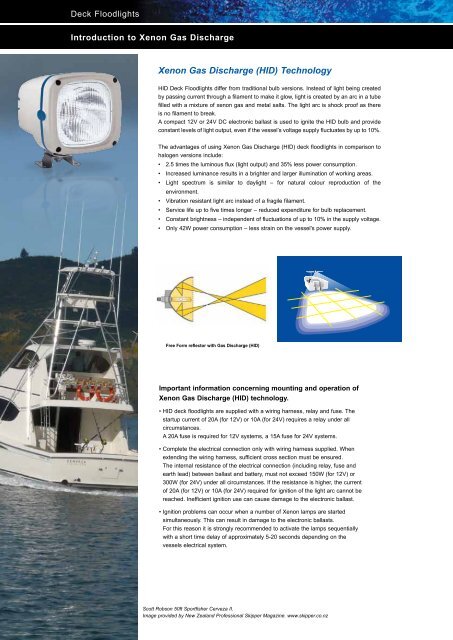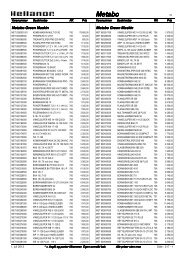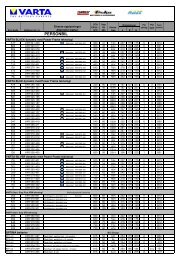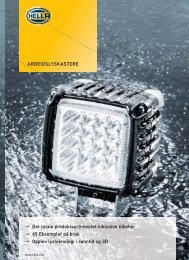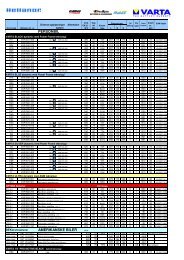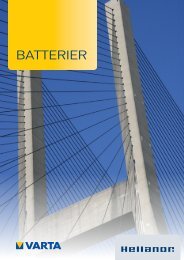LED Module 70 - Hellanor
LED Module 70 - Hellanor
LED Module 70 - Hellanor
- No tags were found...
You also want an ePaper? Increase the reach of your titles
YUMPU automatically turns print PDFs into web optimized ePapers that Google loves.
Deck FloodlightsIntroduction to Xenon Gas DischargeXenon Gas Discharge (HID) TechnologyHID Deck Floodlights differ from traditional bulb versions. Instead of light being createdby passing current through a filament to make it glow, light is created by an arc in a tubefilled with a mixture of xenon gas and metal salts. The light arc is shock proof as thereis no filament to break.A compact 12V or 24V DC electronic ballast is used to ignite the HID bulb and provideconstant levels of light output, even if the vessel’s voltage supply fluctuates by up to 10%.The advantages of using Xenon Gas Discharge (HID) deck floodlights in comparison tohalogen versions include:• 2.5 times the luminous flux (light output) and 35% less power consumption.• Increased luminance results in a brighter and larger illumination of working areas.• Light spectrum is similar to daylight – for natural colour reproduction of theenvironment.• Vibration resistant light arc instead of a fragile filament.• Service life up to five times longer – reduced expenditure for bulb replacement.• Constant brightness – independent of fluctuations of up to 10% in the supply voltage.• Only 42W power consumption – less strain on the vessel's power supply.Free Form reflector with Gas Discharge (HID)Important information concerning mounting and operation ofXenon Gas Discharge (HID) technology.• HID deck floodlights are supplied with a wiring harness, relay and fuse. Thestartup current of 20A (for 12V) or 10A (for 24V) requires a relay under allcircumstances.A 20A fuse is required for 12V systems, a 15A fuse for 24V systems.• Complete the electrical connection only with wiring harness supplied. Whenextending the wiring harness, sufficient cross section must be ensured.The internal resistance of the electrical connection (including relay, fuse andearth lead) between ballast and battery, must not exceed 150W (for 12V) or300W (for 24V) under all circumstances. If the resistance is higher, the currentof 20A (for 12V) or 10A (for 24V) required for ignition of the light arc cannot bereached. Inefficient ignition use can cause damage to the electronic ballast.• Ignition problems can occur when a number of Xenon lamps are startedsimultaneously. This can result in damage to the electronic ballasts.For this reason it is strongly recommended to activate the lamps sequentiallywith a short time delay of approximately 5-20 seconds depending on thevessels electrical system.Scott Robson 50ft Sportfisher Cerveza II.Image provided by New Zealand Professional Skipper Magazine. www.skipper.co.nz42


